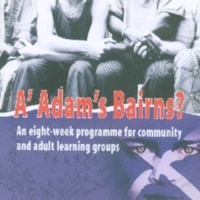
A' Adam's Bairns? Exploring equality and diversity in Scotland past and present
A’ Adam’s Bairns? is an educational resource pack produced in 2007 by a partnership of the National Library of Scotland and the Scottish Development Education Centre (Scotdec). The project explored equality and diversity both past and present, and looked at the attitudes and behaviours which underpinned slavery then and now, such as racism, sectarianism, prejudice and ignorance. The resources and reference materials are aimed at school children and also community and adult learning groups. They made use of material held by the National Library of Scotland and the National Archives of Scotland, and also included contemporary and traditional music produced by Scottish music expert Dr Fred Freeman, including a rendition of 'The Slave's Lament' by Robert Burns. Modules on the programme included slavery, forced movement of people and taking action for change.
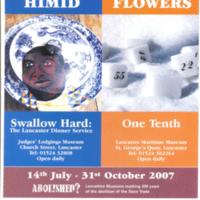
Abolished? Lancashire Museums marking 200 years of the abolition of the Slave Trade
Lancaster was the UK's fourth largest slaving port at the height of the transatlantic slave trade in the 18th century. Lancashire Museums worked with a range of partners to raise awareness of this largely hidden history - first from 2002 through STAMP (the Slave Trade Arts Memorial Project), and in 2007 through Abolished? This bicentenary project consisted of exhibitions, creative writing, radio broadcasts, and schools projects, one of which produced a Slavery Town Trail that explored some of the buildings made possible by the wealth the slave trade brought to Lancaster. At the heart of the project were commissioned installations and interventions by artists Lubaina Himid ('Swallow Hard: The Lancaster Dinner Service' at the Judge's Lodgings) and Sue Flowers ('One Tenth' at Lancaster Maritime Museum). Both were accompanied by outreach programmes and workshops with local schools. A touring exhibition was produced in partnership with Anti-Slavery International and Lancashire County Council Youth and Community, which looked at transatlantic slavery and modern day slavery. The exhibition toured throughout Lancashire.
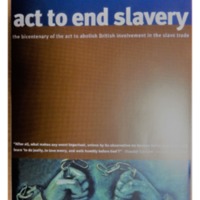
Set All Free Gloucestershire
The Gloucestershire Set All Free initiative was organised by Churches Together in Gloucester and other organisations to mark the bicentenary. An Events Guide set out some of the events, lectures, film screenings, music festivals and exhibitions taking place in Gloucestershire to remember the horrors of transatlantic slavery, while also making clear the imperative to take action to end modern forms of slavery. There were bicentenary related activities at Gloucester City Museum and Art Gallery and Cheltenham Art Gallery and Museum. There were also a number of events at Gloucester Cathedral and local churches, including St Mary's in Wotton-under-Edge. Two exhibitions focused on contemporary slavery were organised by the Anti-Slavery International League. The Guide also includes details of various festivals with a focus on the bicentenary, including the 1 World Festival Freedom 07, the Gloucester International Rhythm and Blues Festival and Cheltenham Music and Literature Festivals.
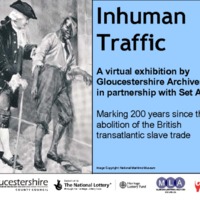
Inhuman Traffic
The Inhuman Traffic project was led by Gloucestershire Archives, in partnership with the Set All Free initiative. The virtual exhibition and accompanying web resource were based on documents held at Gloucestershire Archives and, in particular, the papers of the anti-slavery campaigner Granville Sharp (1735-1813). The exhibition explored topics such as the contribution of black people to the abolition movement, aspects of the legacies of slavery, including racism and domestic violence. Over 400 copies of the exhibition DVD were sent to schools, churches, tourist information venues and individuals across Gloucestershire. The associated programme of events included performances of the play 'Inhuman Traffic', developed in collaboration with a local theatre company, Spaniel in the Works. The play features four interacting characters with different perspectives on slavery. A cross-curricular teaching resource was later developed, which included a second performance, 'Master and Slave', in partnership with Stroud District Museums Service, Spaniel in the Works, and Parliament Primary School, Stroud.
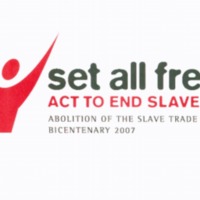
Set All Free: ACT TO END SLAVERY
Set All Free: ACT TO END SLAVERY was a project of Churches Together in England, based in London. It was also a collaboration between church-related groups, societies and organisations around the UK working together with a Christian ethos to assess the relevance of the bicentenary, and in particular the legacies of slavery. The project aimed to highlight how the values of the abolitionists can transform relationships on an individual, community and society level. The project included building a network coalition, campaigning, producing research and resources for churches, schools and individuals. Set All Free also worked closely with Anti-Slavery International and Rendezvous of Victory, a leading African community-led organisation.
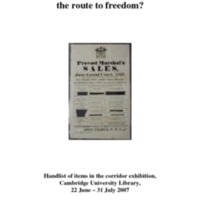
Slavery, shackles and sugar: the route to freedom?
Cambridge University Library held a small exhibition in 2007 showcasing its collections of rare books and manuscripts relating to slavery and abolition. These include records of the Greg family, who owned a sugar plantation in Dominica, and documents relating to slave compensation for the West India colonies. Other records held by the library relate to British Quakers, the abolition campaign, and the persistence of slavery in the 20th century and into the present day.
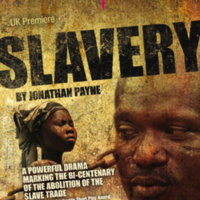
Slavery
A one-act play by Jonathan Payne, 'Slavery' re-tells the personal stories of enslaved Black Americans, using original recordings of interviews conducted by the United States Government's Federal Writers Project in the 1930s. The play brings together a collection of personal testimonials and spirituals (Christian songs created by African slaves in the United States), to explore the consequences of slavery. Presented in 2007 by the cross-cultural London theatre company Tara Arts and directed by Laura Kriefman, the play toured nationally during Black History Month. An Education Resource Pack was produced and drama workshops for schools were held after the performances to explore the issues raised.
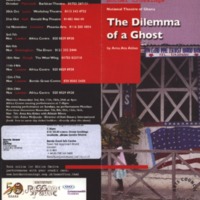
The Dilemma of a Ghost
Written by Ghanaian playwright Ama Ata Aidoo, The Dilemma of a Ghost deals with colliding cultures in 21st century Africa. An African-American woman accompanies her Ghanaian husband as he returns home, but the couple are haunted by ghosts of the inheritance of the slave trade. A collaboration between London theatre company Border Crossings and the National Theatre of Ghana, the production used music and dance to celebrate 50 years of Ghana’s independence and 200 years since the abolition of the transatlantic slave trade. The play was performed in Birmingham, Hull, Leeds, Leicester, London, Plymouth and Slough. The production was was accompanied by a new book from Border Crossings, working in collaboration with Anti-Slavery International. ‘Theatre and Slavery: Ghosts at the Crossroads’ explored the ways in which world theatre responds to key issues in modern society and politics, including the issue of contemporary slavery.
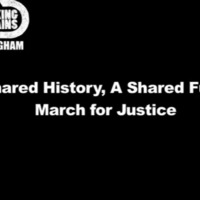
A Shared History, A Shared Future
A Shared History, A Shared Future was a series of projects led by Birmingham Libraries to engage with different communities within Birmingham. The project as a whole identified archival materials, local historical documents and music with an emphasis on the diverse multicultural nature of historical and modern indentured slavery, and how it relates to everyday lives in Birmingham. Over 1000 participants from schools and community groups took part in over 150 workshops to create stories, artwork, banners, protests, games, films, dances, drama and performances. A resource pack, the liberty box, was produced to encourage community groups, youth groups and others to explore the issues of slavery. In August 2007, the project organised the March for Justice in Birmingham city centre, a recreation of the Quaker and philanthropist Joseph Sturge's march against slavery in August 1838. The day included an anti-slavery fashion show, a limbo performance, storytelling, African drumming, and a Slavery Question Time Special hosted by an actor representing Olaudah Equiano.
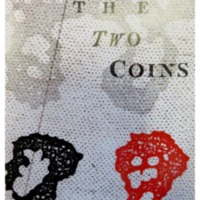
The Two Coins
A bronze statue of the slave trader Edward Colston was erected as a memorial in Bristol city centre in 1895. The monument and the memories it evokes of Colston's trading in enslaved Africans is frequently used as a point of reference for Bristol's contribution to the transatlantic slave trade. The Two Coins is a visual sculpture and moving image installation created by artist Graeme Mortimer Evelyn to revolve around such monuments. The installation aimed to present an unprejudiced historical legacy while highlighting collective responsibility to prevent forms of 21st century slavery.
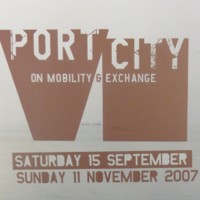
Port City: On Exchange and Mobility
Port City was a large-scale exhibition featuring over 40 international artists and addressing issues of migration, trade and contemporary slavery. Set in the arts centre and gallery Arnolfini, it was accompanied by a programme of art, music, film, literature and educational activities. Coinciding with the bicentenary year, several works explored Bristol's histories of trade, as well as a contemporary port. For Seeds of Change, Brazilian artist Maria Thereza Alves researched sites around the Floating Harbour where ballast would have been off-loaded. The ballast seeds discovered were germinated by local groups so as to make a garden of ‘living history’, reflecting the different routes travelled by Bristol merchants. Other highlights included a model of a 'global village' made from sugar by Meschac Gaba and kaleidoscopes showing contemporary scenes from the triangle of the transatlantic slave trade by Mary Evans.
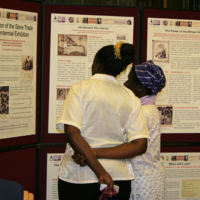
Abolition of the Slave Trade Bicentennial Exhibition
This exhibition held by the Cadbury Research Library: Special Collections at the University of Birmingham included material from the archives of the Church Missionary Society held there, and some of its rare book collections. The accompanying information boards are featured here. The exhibition focused on the role of religion in the abolitionist movement, the power of the African voice in literature, and the role played by Birmingham residents in the anti-slavery campaigns. A booklist on anti-slavery publications held at the library was also produced. The exhibition was part of a University-wide initiative, with additional involvement from academic departments and the Guild of Students. An online exhibition was also produced in collaboration with the Library of the Religious Society of Friends: 'Quakers and the path to abolition in Britain and the colonies'.
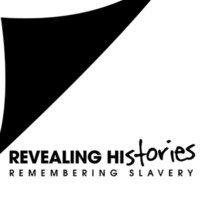
Revealing Histories: Remembering Slavery
The Revealing Histories: Remembering Slavery project sought to uncover the North West's involvement in the slave trade (and the consequent social and economic effects of this involvement) and the region's contribution to the abolition of the transatlantic slave trade and colonial slavery. Eight museums and galleries across Greater Manchester collaborated to commemorate the lasting legacies of the transatlantic slave trade. The participating venues were: Bolton Museum and Archive Service; Gallery Oldham; Manchester Art Gallery; The Manchester Museum; Museum of Science and Industry; People's History Museum; Touchstones Rochdale; and Whitworth Art Gallery. A collaborative website and a programme of exhibitions, trails, performances, films and events took a new look at the collections of these museums and galleries and the buildings in which they are housed, revealing hidden histories of the region's involvement in the slave trade. The project also examined slavery's contemporary legacy and relevance.
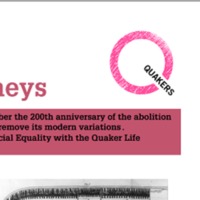
Quakers and the path to abolition in Britain and the colonies
The Society of Friends expressed its formal opposition to the slave trade in 1727, and from that date were vocal opponents of transatlantic slavery. A virtual exhibition of archived resources, ‘Quakers and the path to abolition in Britain and the colonies’, was launched online to commemorate the bicentenary. It traced the history of the anti-slavery movement from its Quaker beginnings and highlighted key events in the Quaker history of opposition to the slave trade, and was primarily based on material from the Library at Friends House. The exhibition also explained the important role played by Quaker women abolitionists through writing and poetry. The Quakers pioneered contemporary tactics such as boycotting, petitions, leafleting and poster campaigns.
Other resources to help people find out more about the bicentenary included ‘Abolition Journeys’, developed by Quaker Life Committee for Racial Equality with the Quaker Life Children and Young People’s Staff Team, designed to help people of all ages remember the slave trade and work to abolish its modern variations.
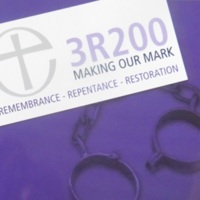
Making our Mark: Remembrance, Repentance and Restoration in 2007
This project was the Church of England’s official response to the bicentenary, as CMEAC (established by the Archbishops’ Council) explored the Church’s multi-faceted role in the history of slavery in Britain. Making our Mark focused on connections with local communities, opening access to heritage, and raising awareness of the legacies of slavery. The project had two main strands. The first was a set of regional dialogues – the Bicentenary Hearings – which represented local opportunities for discussion about experiences of slavery, as a way to make new connections between past and present, education and action. The Hearings took place in Liverpool, London, Birmingham, Hull and Southwark in February and March 2007. The second strand was the Walk of Witness, a heritage trail through London on 24 March 2007. Participants included government representatives, leaders in the Church of England, social justice organisations, ecumenical and multi-faith partners, and schools. A pack was produced for schools, including a DVD with footage from the Walk and Hearings.
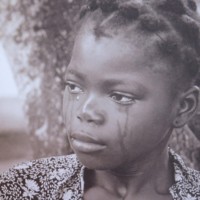
Remembering Slavery Exhibition
Remembering Slavery 2007 involved museums, galleries and other cultural organisations across the North East of England in a programme of exhibitions, events, performances, lectures and activities to explore the themes of slavery and abolition, and identify connections with the region.
The Remembering Slavery exhibition focused on objects, paintings, documents and other historical material relating to the transatlantic slave trade and its legacy. The exhibition and associated programme of activities opened at the Discovery Museum in Newcastle and then toured to South Shields Museum and Art Gallery; Sunderland Museum and Winter Gardens; and the Laing Art Gallery. Whilst at the Discovery Museum, the historical exhibition was accompanied by a photographic exhibition, ‘Human Traffic’, produced by Anti-Slavery International, documenting the trafficking of children in Benin and Gabon in West Africa. Whilst at the Laing Art Gallery, the exhibition was shown alongside ‘La Bouche du Roi’ by Romauld Hazoumé, a contemporary installation based on the ‘Brookes’ slave ship.
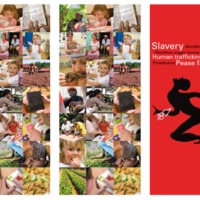
Slavery Here!
Slavery here! was a project hosted by museums across the Tees Valley led by Preston Hall Museum. It featured an interactive exhibition to explore the story of the Tees Valley’s connections with slavery. For example, the town of Stockton-on-Tees had its own Sugar House, a refinery that processed sugar from the Caribbean. The exhibition also looked at the work of local abolitionist campaigners Dr Robert Jackson and Elizabeth Pease, and the impact of contemporary slavery on today's society. Alongside the exhibition at Preston Hall Museum, other special events included workshops on African drumming and culture, object handling, and introductions to Fair Trade products. The project also produced a commemorative quilt (in collaboration with Newtown Community) and a film, ‘Manacles and Money’.
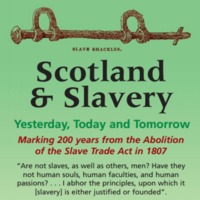
Scotland and Slavery
Action of Churches Together in Scotland (ACTS), which brings together nine Scottish denominations, marked the bicentenary with the Scottish Ecumenical Service to commemorate abolition held in the David Livingstone Centre in Blantyre in June 2007. The group also published a leaflet, ‘Slavery and Scotland’. On 25 March 2007, a commemoration walk was organised in partnership with the National Trust for Scotland. The walk started in Musselburgh and ended at the Gardens of Inveresk Lodge, once owned by James Wedderburn, who made his fortune as a slave owner in Jamaica. His son, the Jamaican-born Unitarian radical and anti-slavery advocate Robert Wedderburn, came to Musselburgh in 1795 to visit his father, but did not receive a good welcome.
ACTS also set up Freedom for All, a website project to mark the bicentenary. The website was intended to be a hub of resources and information on the impact of slavery, slave trade and abolition on Scotland.
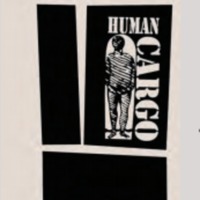
Human Cargo: The Transatlantic Slave Trade, its Abolition and Contemporary Legacies in Plymouth and Devon
Human Cargo was a partnership project between Plymouth City Museum and Art Gallery, and the Royal Albert Memorial Museum, Exeter. The project consisted of two main components. The first was a historical exhibition, which explored the development of the transatlantic slave trade and, in particular, the role of Plymouth as a port, the involvement of the City's dignitaries and the South West's links with the abolition movement. The second part was a contemporary art response to modern forms of slavery and historical legacies, including the flower picking trade, sweatshop labour and the Fair Trade Movement. This work was newly commissioned and included audio visual pieces, installations, hand-printed wallpaper and participatory objects. A variety of events and activities took place alongside the exhibition including education workshops, performances, African music and storytelling activities, and Elizabethan House re-enactment sessions.
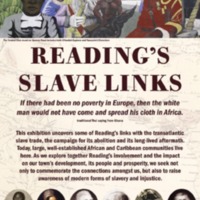
Reading's Slave Links
This exhibition from Reading International Solidarity Centre (RISC) in collaboration with local communities uncovered Reading’s links with the slave trade, the campaign for its abolition and its aftermath. Exploring Reading’s involvement in historical slavery and the impact on the town’s development, the exhibition focused on, for example, wealthy families in the area, the role of the Royal Berkshires in Caribbean colonies, and the story of Mary Smart, the earliest known Sierra Leonean resident in Reading. The project also sought to raise awareness of modern forms of slavery and injustice. It included workshops, a conference, and a quiz.